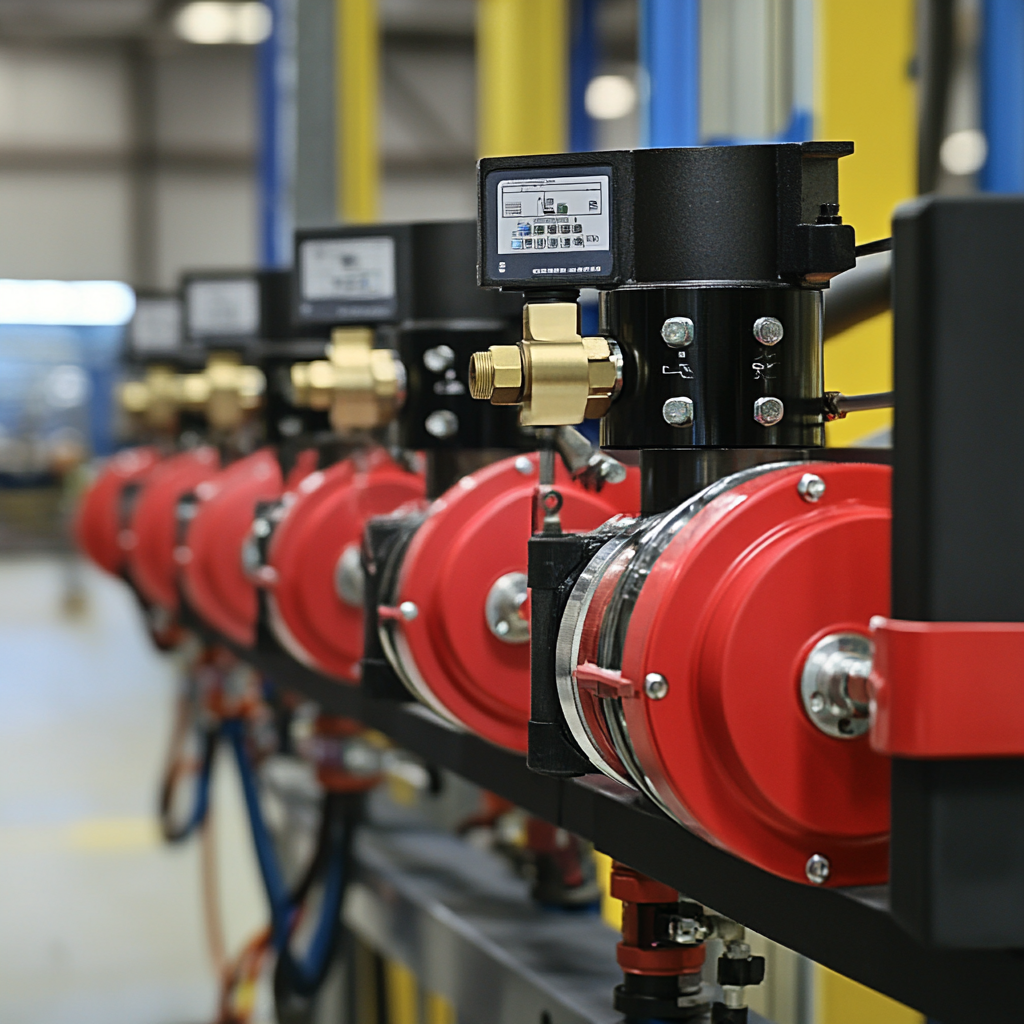Ball valves are one of the most common and sought-after types of shut-off valves, widely used in various industrial and household systems. Their simple design, high reliability, and ease of operation have made ball valves popular worldwide. In this article, we will take a detailed look at the construction features of ball valves, their main advantages, and areas of application.
Description of Ball Valves
A ball valve is a device used to control the flow of liquid or gas in a pipeline. The primary element of its construction is a ball with a hole that rotates around its axis. By turning the ball 90 degrees, the flow of the medium is either blocked or opened, depending on the position of the hole. This design ensures quick and reliable flow shut-off, making ball valves ideal for systems where frequent on-off flow control is required.
Key components of a ball valve include:
- Body: Typically made of metal (steel, brass, bronze) or plastic, the body protects the internal elements of the valve from external damage and ensures tight connections.
- Ball: The central element of the valve, made from metal or another wear-resistant material. The ball has a hole through which the working medium passes.
- Seats: Sealing elements located around the ball. They ensure the valve's tightness when closed and minimize leaks.
- Control Mechanism: A handle or lever used by the operator to turn the ball to open or close the flow.
Structural Features of Ball Valves
Ball valves have several structural features that distinguish them from other types of shut-off valves:
- Simple Design: A minimal number of moving parts reduces the likelihood of breakdowns and simplifies maintenance.
- Quick Operation: The rotary mechanism allows for rapid opening or closing of the flow, which is especially important in emergency situations.
- High Tightness: Ball valves provide near-complete leak prevention due to the tight fit of the ball to the seats.
- Versatility: They can be used for various media, including water, gas, oil, chemicals, and even abrasive liquids.
- Durability: Thanks to robust materials and simple construction, ball valves have a long service life.
Applications of Ball Valves
Ball valves are used in a wide range of fields due to their universal characteristics and reliability. Let's explore the main areas of their use.
-
Water Supply and Sewer Systems
- In water supply systems, ball valves are used to control water flow in pipelines. They are installed on both main lines and local systems, such as homes, apartments, and businesses. Their tightness and ability to withstand high pressure ensure reliable water shut-off, preventing leaks and flooding.
-
Gas Networks
- In gas supply, ball valves are used to control the flow of natural or liquefied gas. They provide quick and safe gas shut-off, which is crucial for preventing emergencies and ensuring user safety. Ball valves for gas networks are made from materials resistant to gas exposure, ensuring maximum tightness.
-
Oil and Gas Industry
- In the oil and gas sector, ball valves are used in systems for transporting and processing oil and gas. They are installed on pipelines, tanks, and other facilities to control flow and prevent leaks. Special attention is given to the materials and construction of such valves to ensure resistance to aggressive environments and high pressures.
-
Chemical Industry
- In the chemical industry, ball valves are used to control the flow of various chemical substances, including aggressive and corrosive media. They ensure reliable shut-off and tightness, which is crucial for preventing leaks and protecting equipment from damage. Materials used for ball valves in the chemical industry must be resistant to chemical exposure.
-
Food Industry
- In the food industry, ball valves are used to manage the flow of liquids and gases in production processes. They must comply with strict sanitary standards and ensure ease of cleaning and disinfection. Ball valves used in the food industry are made from materials safe for contact with food products.
-
Household Systems
- In residential settings, ball valves are used in heating, ventilation, and air conditioning systems. They regulate the flow of heat carriers and air, providing comfortable conditions indoors. The simplicity of control and high reliability make ball valves a popular choice for household systems.
Advantages and Disadvantages of Ball Valves
Like any engineering device, ball valves have their advantages and disadvantages, which should be considered during selection and operation.
Advantages:
- High Speed of Operation: Unlike gate valves and other types, ball valves can quickly open and close, which is especially useful in emergency situations.
- Reliable Tightness: Thanks to the tight fit of the ball to the seats, ball valves ensure virtually no leakage.
- Durability and Reliability: Simple construction and robust materials provide a long service life without frequent maintenance.
- Wide Range of Applications: Ball valves can be used for various types of media and in diverse operating conditions.
Disadvantages:
- Limited Regulation Capability: Ball valves are not designed for precise flow regulation, which can be a drawback in systems requiring fine-tuning.
- Risk of Jamming: The ball can jam if left in one position for an extended period, making it difficult to open or close.
- Sensitivity to High Temperatures: At very high temperatures, some materials used in ball valves may deform or lose their properties.
Conclusion
Ball valves are an essential component of many systems and processes, providing reliable and efficient control of liquid and gas flows. Their simple design, high tightness, and versatility make them indispensable in various fields, from household systems to large industrial complexes. When selecting a ball valve, it is important to consider operating conditions, the type of working medium, and tightness requirements to ensure the reliable and safe operation of the system. Modern technologies and materials allow for the creation of ball valves with improved characteristics, opening up new possibilities for their application in the most complex and demanding tasks.
